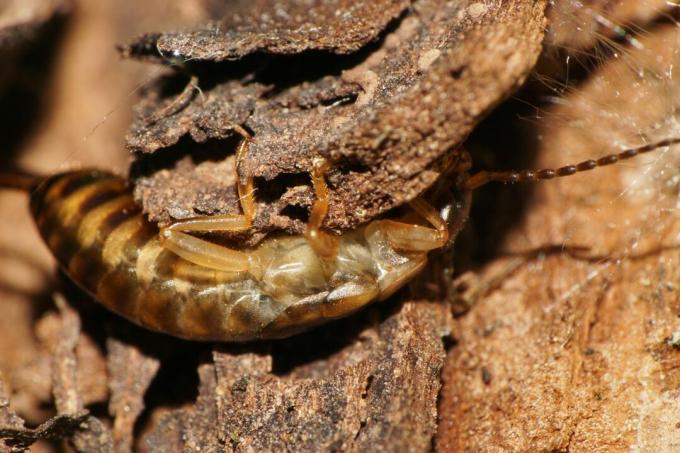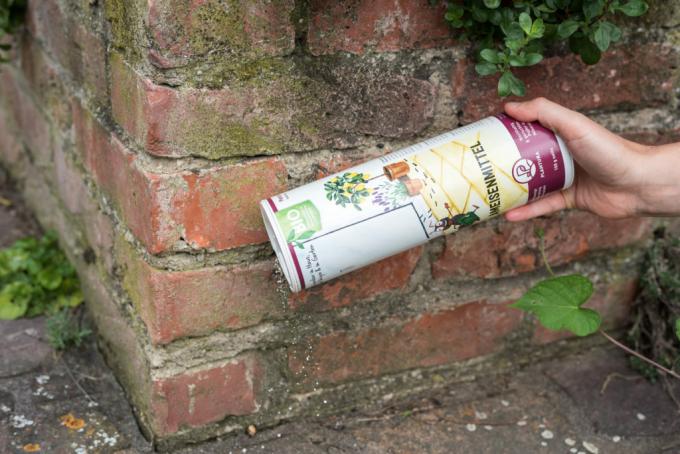Of course, earwigs do not belong in the apartment. But are they dangerous and do they really crawl in your ear at night? Here you will find the facts.

Since the Middle Ages, people have not really warmed to earwigs – or earwigs in general. New findings have completely changed the light on him: now he should no longer be a malicious parasite of our ears, but a useful garden helper. We will explain to you whether the earwig is useful, harmful or dangerous.
contents
- Earwigs: description and way of life
- Earwigs in the ear: myth or truth?
- The earwig as a pest
-
The earwig as a beneficial creature
- Conclusion: is the earwig useful or dangerous?
- Attracting earwigs: Hotel, flower pot and Co.
First we want to describe the earwig very soberly in its way and way of life, then we clarify whether earwigs actually do anything with our ears. And after we have summarized whether it is a beneficial or a pest, we explain how an earwig hotel in the garden can benefit the little animals.
Earwigs: description and way of life
Earwigs belong to the order of earwigs (Dermaptera). The included genus has existed for at least 34 million years Forficula, which also includes the earwig that occurs here and in North America. Although earwigs are taxonomically a flying insect, most of them rarely or never fly. Their membranous hindwings are hidden under the hardened forewings, which they can fold up intricately. With the common earwig (Forficula auricularia) the hind wings are so reduced that it can hardly fly. It has biting-chewing mouthparts and is an omnivore. Rarely is he also interested in selected types of ornamental plants or fruits. With a body length of only 9 to 16 mm, it is a small representative of its order - earwigs of up to 6.5 cm in length live in Australia.
The pincers - called cerci - are used in hunting, for defence, for unfolding the wings and in mating. Forficula auricularia is what is commonly referred to in Germany as "the earwig" or optionally also hyrax, ear louse or even ear wusser. Its way of life is cryptic, under damp leaves or bark, it finds food in cracks and crevices and lays its eggs there. It only gets into the house by accident, but sheds, garages, balconies and garden sheds are often chosen as quarters. Here you can find out how you can use traps to get rid of or combat earwigs in the house, apartment and garden.

Earwigs in the ear: myth or truth?
In the Middle Ages, it was believed that earwigs crawl into our ears at night, tear the eardrums with their pincers, and then lay their eggs in our skulls. It's true that the Middle Ages were long ago, but the naming still left a certain uneasiness. Incidentally, this was even enshrined in the Latin name: auricle means "little ears". And the fact that earwigs like to stay in beds is just as easy to explain: Beds are often slightly damp – only nowadays then when they are not aired, but in the Middle Ages there was hardly any moisture from houses, especially in rainy times exorcise The earworms also like the narrowness and darkness and this is probably how the myth of the dangerous, crawling pest arose. Perhaps as revenge, the animals were later used as ear medicine: ground up and sprinkled in the ears, they were said to cure hearing loss, ear diseases or even deafness.
Tip earwig bite: The "bite" of an earwig, i.e. pinching with the pincers (cerci) at the end of the abdomen, is not poisonous and does not hurt either. However, it can happen that an earwig defends itself in this way if it is pressed too much. He is also able to shoot at enemies up to 10 cm away with a secretion - a chemical weapon, but harmless to us.
The earwig as a pest
On grain stores, ripening grapes and peaches, and some ornamental plants - including clematis (clematis), trumpet flower (Campsis radicans), angel trumpet (Brugmansia) and dahlias (dahlias) – earwigs can appear as pests. While this behavior is more the exception than the rule, it hasn't happened yet Pesticides are approved for control, so that an infestation in commercial cultivation can cause problems can lead. Because the earwigs often get into the harvested crops, they also cause additional costs, because the harvest now has to be checked more laboriously. In most cases, however, the earwig is limited to this, already from other insects continue to consume damaged fruits and plants - so he's almost never for primary damage responsible.
It can appear occasionally in human dwellings, but there is no plague as the animals never produce more than two generations per year. In damp and dark sheds, garages, garden sheds and on shady balconies, however, they like to look for quarters that they then populate too many. If you want to dissolve such a camp, you will find out in this article earplugs in the apartmenthow this can be done. Our Plantura is an effective method of combating unpleasant lodgers ant remedy. It can also be used indoors and does not pose a hazard if used correctly.

Plantura ant remedy
Reliable control of ants, odorless powder made from minerals, active ingredient InsectoSec®
The earwig as a beneficial creature
There's a reason there aren't any real remedies for outdoor earwigs yet: they're actually either harmless or even quite useful most of the time. Since they feed mainly on detritus - i.e. organic waste - and fungi as well as algae, they are Part of the valuable soil life and involved in the formation of humus and the release of nutrients. Because it also eats small insects, it is partly useful to us: aphids and other slower plant pests are occasionally eaten, as well as the eggs of various moths and even mildew fungi. Last but not least, earwigs are of course also food for welcome garden guests such as sparrows, hedgehogs and shrews. So if you want to use the clout of earwigs and occasionally a nibbled leaf edge or a secondarily populated apple should not hesitate to colonize earwigs rather than them fight.

Conclusion: is the earwig useful or dangerous?
In the garden, the earwig is more useful than harmful, and in our gazebos and sheds it is more annoying and unpleasant than actually dangerous. Its large pincers and primeval appearance scare children in particular. Here you should refrain from carrying on the old wives' tale about the parasitic ear crawlers. There are many non-toxic and therefore harmless methods for humans and (pet) animals to get rid of the little animal - we have them in this article for you earwigs in the apartment summarized. We recommend removing the earwig from human habitation using our Plantura ant remedy consistently kept away, but tolerated or even encouraged in the garden. It's very easy: With an earwig hotel, which you can easily make yourself using our instructions.
Tip: Our Plantura ant centerl can not only with earwigs but of course also with ants (Formicidae), woodlice (Porcellio scaber) and silverfish (Lepisma saccharrina) effectively remedy the situation.

Attracting earwigs: Hotel, flower pot and Co.
To encourage earwigs, you can craft them a good shelter. Such an earwig hotel quickly leads to veritable gatherings of the quite sociable animals. Eggs are also laid here and are protected from many predators.
How is an earwig hotel built?
- Use a classic clay pot. If you want to hang it up later, it should have a hole.
- Fill the pot with straw, hay or excelsior and sprinkle with a handful of soil.
- From chicken wire, pinch a round shape that will extend over the rim of the pot by about 3cm when held in front of it.
- Close the clay pot with the grid by bending it around the pot opening and looping a wire around it and twisting it tight.
- You can place the prepared pot in the bed or hang it on trees or poles. When hanging, make sure that the pot is in direct contact with the tree or another natural climbing opportunity. It's also good if the pot doesn't get too wet inside when it rains: you can cover the hole in the bottom with glued-on potsherds, for example.
Tip: Of course, you can also decorate the pot to make the earwig hotel an eye-catcher in the garden. Or they directly use particularly beautiful ceramics. A ceramic earwig hotel is easily made from any hollow open garden ornament. If you still don't want to attract the earwig, but want to get rid of it, you'll find everything you need to know about how to do it successfully here Combating earwigs.
...and receive concentrated plant knowledge and inspiration directly in your e-mail inbox every Sunday!

